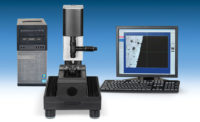Changes to work processes on the International Space Station (ISS) are just one of the many changes occurring throughout NASA as a result of the accident report that cast a wide net of blame as to the causes of the Columbia shuttle disaster.
After a nearly seven-month investigation, the Columbia Accident Investigation Board (CAIB) determined in September that a piece of insulating foam broke from the external fuel tank less than two minutes after takeoff and damaged the left wing, which led to the breakup of the shuttle. However, that was just one physical cause noted by the investigative team. The report pointed to problems from the leadership of NASA to the supply chain and the use of technology in manufacturing.
The space agency has spent the past several months, even before the final report was released, working to provide answers to the problems identified in the report including improved nondestructive and other testing procedures, failure analysis and improved communication.
The CAIB report is being used throughout the agency to check for applicability to other programs. In late October, the International Space Station program released the report, "NASA's Implementation Plan for International Space Station Continuing Flight."
While the report is short on specifics, it does list a number of initiatives that the ISS program has undergone including implementing continuous improvement actions. For instance, NASA has begun a failure modes and effect analysis of critical items to identify potential hardware failures and their causes, and to assess their worst-case effect on the space station operations and crew. It has begun to identify inspection and test process for critical items and formulated procedures.
The report also says that "high quality processes must be established and effective QA activities must be in place." According to the report, plans have been developed to provide a full-time quality staff to support quality assurance processes, including anomaly resolution. It also plans to pursue an experienced quality skill base to better implement quality processes and enhance the training of QA and engineering personnel.
"The ISS Program has identified the need to strengthen the QA role in management and implementation of its anomaly resolution processes," the report says.


